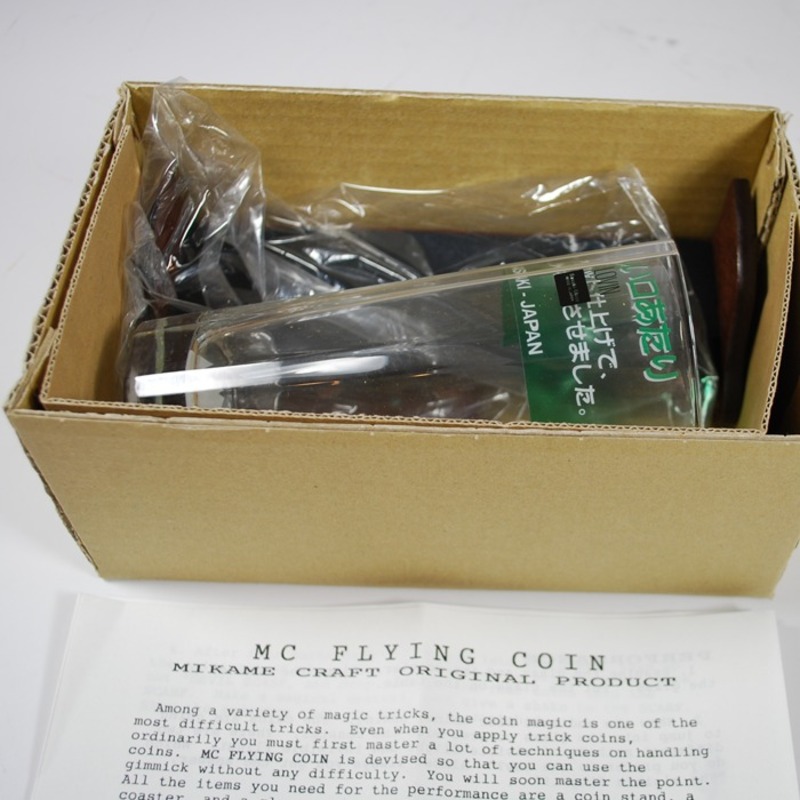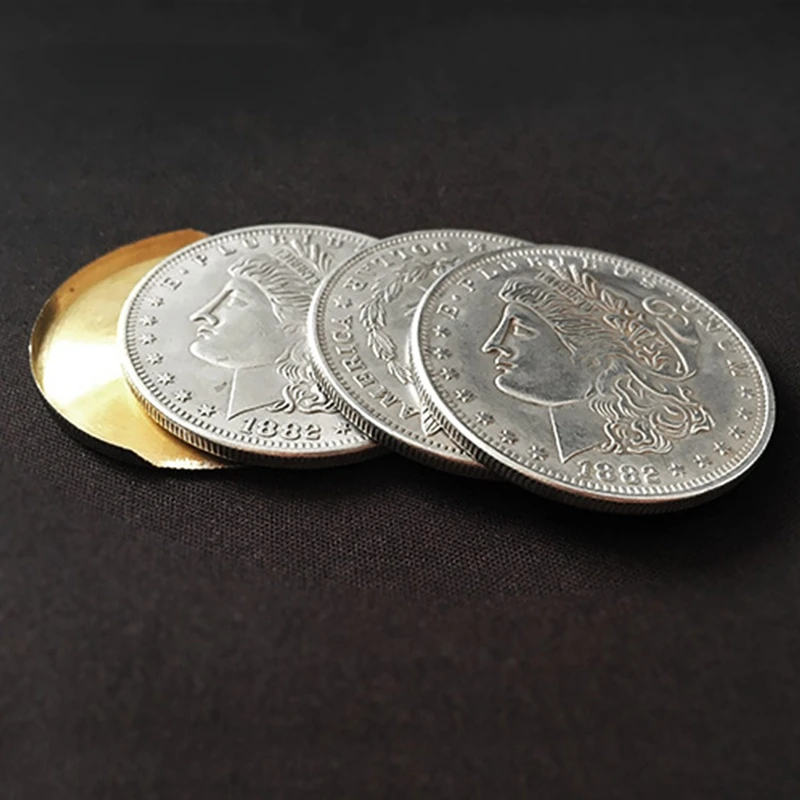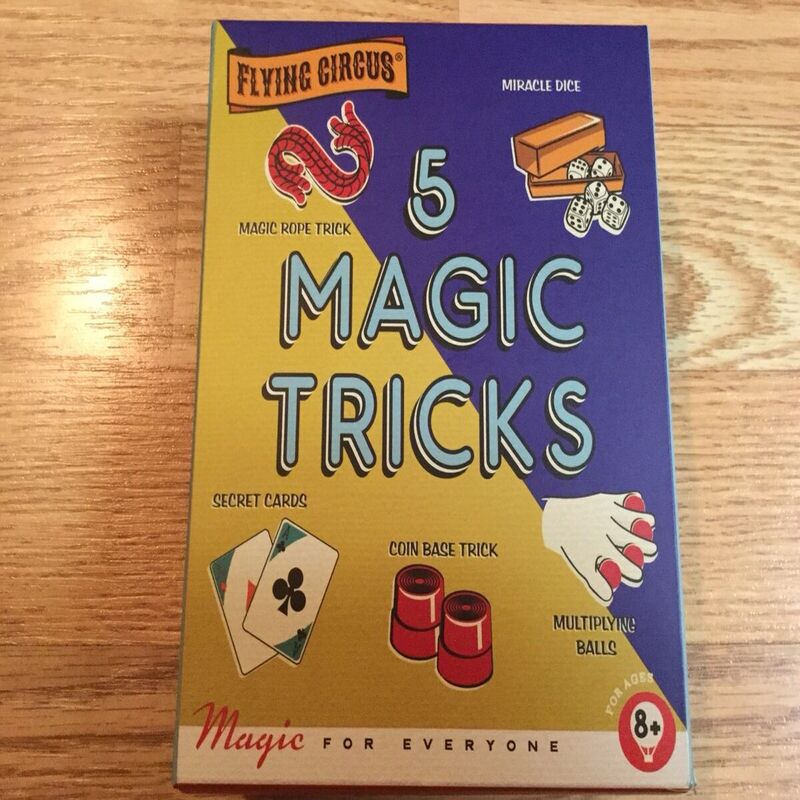Magic has always fascinated audiences around the world. Among the many tricks magicians perform, coin flying stands out. This enchanting illusion captivates viewers and engages their imaginations. The coin seems to defy gravity, moving through the air seemingly with no effort. As a result, it’s a favorite among both novice and experienced magicians alike. In this article, we will explore the techniques behind coin flying. We’ll also discuss its performance aspects and its significance within the magic community.
Understanding the Coin Flying Trick
The Basics of Coin Flying
Coin flying is a sleight-of-hand magic trick that creates the illusion of a coin flying through the air. When performed correctly, it looks effortless and incredibly magical to the audience. The effect relies on misdirection and precise hand movements. The magician’s skill becomes evident as they execute the trick with smooth, fluid motions. Understanding the basics is key for anyone wishing to master this trick.
Furthermore, the most common techniques include palming, throwing, and a variety of deceptive movements. The magician begins by secretly placing the coin in their palm. Next, they create the illusion of it flying through the air. This often involves quick hand movements that draw attention away from the moment of release.
Lastly, practicing these techniques repeatedly is crucial. The more comfortable a magician becomes with the movements, the more convincing the illusion. Proper finger positioning and grip strength are also necessary for a successful performance. Each detail plays a significant role in creating the magical experience.
The Importance of Misdirection
Misdirection forms the backbone of many magic tricks, especially coin flying. Magicians use various tactics to divert the audience’s focus, which allows them to perform the trick undetected. Effective misdirection requires both skill and practice. Without it, the illusion can easily fall flat.
To master this, magicians often employ visual and verbal cues. For example, gestures may point the audience’s gaze elsewhere. When combined with engaging storytelling, the result is a more compelling performance. Hence, effective misdirection enhances the overall impact of the magic.
Moreover, the timing of misdirection plays a critical role. A well-timed distraction can make all the difference. By incorporating dramatic pauses and changes in tone, magicians can successfully redirect audience attention. This leads to a more memorable experience.
Understanding how to utilize misdirection effectively can transform a mundane routine into a thrilling spectacle. As a result, mastering this technique is vital for aspiring magicians. It adds layers of depth and sophistication to their performances.

The Historical Roots of Coin Magic
Ancient Origins
Coin magic has a rich history that dates back thousands of years. The origins can be traced to ancient civilizations like Egypt. Early magicians used coins to perform simple tricks. This laid the groundwork for the complex art we see today.
In ancient Rome, performances often featured coins as well. These performances were popular during public gatherings. They were an entertaining way to showcase skills and amuse the crowd. The connection between coins and magic has always been strong. This connection highlights the universal appeal of coin tricks.
Evolution Over Time
As societies evolved, so did the complexity of magic tricks. The Renaissance period marked a significant transformation in the art of magic. Magicians began to explore more sophisticated techniques and illusions. Coin magic particularly expanded during this time.
Performers started incorporating elements of drama and storytelling. This added depth to their acts and captivated their audiences in new ways. The various cultural influences contributed to the evolution of coin tricks. Every region developed unique styles and techniques. Coin magic became a global phenomenon and continues to thrive.
Performing Coin Flying for an Audience
The Setting for Success
Creating the right setting for a coin flying trick enhances its effectiveness. The atmosphere influences audience perception of the illusion. Therefore, choosing the appropriate venue is essential. A location with proper lighting is preferable, as shadows can hinder visibility.
Bright, focused lighting allows spectators to see every movement clearly. Additionally, this type of lighting can create a magical ambiance. It allows the magician’s technique to shine. Moreover, the magician must also consider the layout of the performance space. A stage with an elevated platform or a simple table can serve well for this trick.
Furthermore, the audience’s distance from the performance area matters. Spectators sitting too far away may struggle to see the coin’s movement. Conversely, being too close can reveal the secret behind the trick. A well-balanced distance ensures that the illusion remains intact.
Consequently, finding the right environment is crucial. It enhances both the performer’s confidence and the audience’s enjoyment. A well-planned setting contributes significantly to the overall success of the coin flying illusion.
Engaging with the Audience
Connecting with the audience is not just important; it’s vital for a successful performance. A magician must keep their audience entertained and engaged. This connection enhances the magical experience and makes it more memorable.
To do this, performers often initiate eye contact with audience members. They create a personal bond through smiles and gestures. This interaction makes the spectators feel involved in the trick. Additionally, incorporating humor and storytelling can build a rapport and ease any tension.
Magicians can also respond to audience reactions in real time. Timing and intuition become invaluable tools. If the audience expresses surprise, the magician can adjust their performance to heighten that emotion. This adaptability only amplifies the magical feeling of the moment.
Maintaining energy levels is equally crucial. Enthusiasm can be infectious and magnify the impact of the illusion. The more engaged the magician is, the more likely the audience will be captivated. Therefore, audience interaction must remain a focus throughout the performance.

Advanced Techniques in Coin Flying
The Role of Practice
Mastering the technique of coin flying requires dedicated practice. Just as musicians rehearse for hours, magicians must train diligently. Regular practice develops muscle memory and refines movements. When performed smoothly, the illusion becomes much more convincing.
To enhance practice sessions, magicians can record themselves. Watching performances allows them to spot areas for improvement. They can carefully analyze hand movements and misdirection techniques. This self-reflection ultimately leads to refined performances.
Additionally, performing in front of friends or colleagues helps build confidence. Any feedback received can provide valuable insights. Constructive criticism guides the magician on necessary adjustments. Thus, practice becomes both a mechanism for improvement and a tool for confidence-building.
This continuous rehearsal ensures that the performance is seamless and convincing. Therefore, aspiring magicians must integrate consistent practice into their routines. It lays the groundwork for a successful magical career.
Experimenting with Styles
Exploring different styles of coin flying can keep performances fresh and exciting. Each magician brings their unique flair to illusions, contributing to a diverse array of techniques. Some prefer dramatic flair, while others emphasize subtlety.
Dramatic styles often involve grand gestures and high energy. This captivates audiences and amplifies the illusion’s effect. In contrast, subtle styles rely on finesse and precision. These methods draw viewers in, inviting them to closely observe every detail.
Experimentation with different techniques can enhance a magician’s repertoire. Combining elements from both styles creates a dynamic performance. For instance, starting with a dramatic flourish can set the stage for a more subtle trick.
Moreover, magicians can also consider incorporating music or sound effects. This adds another layer of sensory engagement. The auditory cues can heighten emotional responses and enhance the overall atmosphere. Ultimately, these experiments not only keep the performances exciting but also allow magicians to carve out their unique identity.

The Significance of Coin Flying in Magic
A Historical Perspective
Coin flying has roots that trace back through the rich history of magic. Early magicians used coin tricks as a means to showcase their skills. These tricks served as a foundation for countless illusions. Their simple yet compelling nature allowed them to evolve into more complex forms.
Historically, coin tricks were often a part of street performances. Street magicians dazzled onlookers with their ability to manipulate simple objects. This served as a precursor to modern magic, where skillful hand movements create captivating illusions.
As magic evolved, coin flying became integral in theatrical performances. Audiences began to appreciate the artistry behind each manipulation. Coin flying symbolized the mastery of skill and dexterity. The trick also serves as a benchmark for aspiring magicians, as it demands both finesse and control.
Today, coin flying continues to hold a significant place in the magic community. Its timeless appeal transcends generational gaps, inviting audiences into a world of wonder. Therefore, coin flying remains relevant, both as entertainment and as an art form.
The Legacy of Coin Flying
The legacy of coin flying is not just about the trick itself; it encompasses a broader narrative within magic. Many renowned magicians have contributed their unique interpretations to the art. Each artist leaves behind a legacy that inspires new generations.
For example, legendary magicians like Michael Ammar and David Copperfield have mastered coin tricks. Their performances showcased the trick’s potential to astonish audiences. They infused creativity into their routines, elevating the medium. Their contributions encourage aspiring magicians to innovate and explore new ideas.
Furthermore, coin flying has found its place in popular culture. From television shows to films, the trick captivates audiences worldwide. Its visual nature makes it a perfect candidate for visual storytelling. Consequently, technological advancements have also transformed how coin tricks are performed, integrating digital elements.
As a result, the legacy of coin flying continues to evolve. However, the fundamental principles remain unchanged. The fascination and wonder surrounding the illusion endure. This serves as a powerful reminder of magic’s enduring appeal.
Conclusion: The Continuing Journey of Coin Flying
In conclusion, coin flying remains a captivating aspect of magic. The blend of technique, misdirection, and audience engagement creates a mesmerizing experience. Aspiring magicians must understand both the history and the advanced techniques that make this trick so compelling.
Additionally, creating an engaging performance environment enhances the illusion’s impact. Coin flying not only serves as entertainment; it connects communities through shared awe. The magic continues to thrive as new generations embrace and reinterpret this timeless art form. Thus, the journey of coin flying is ongoing, revealing new dimensions of wonder and creativity.
Ultimately, magic will always be about storytelling and the ability to connect. Coin flying exemplifies this connection, bringing smiles and astonishment to audiences everywhere. As magicians continue to evolve their techniques, the legacy of coin flying will likely endure for generations to come. Each coin thrown into the air carries with it years of tradition and endless possibilities.
